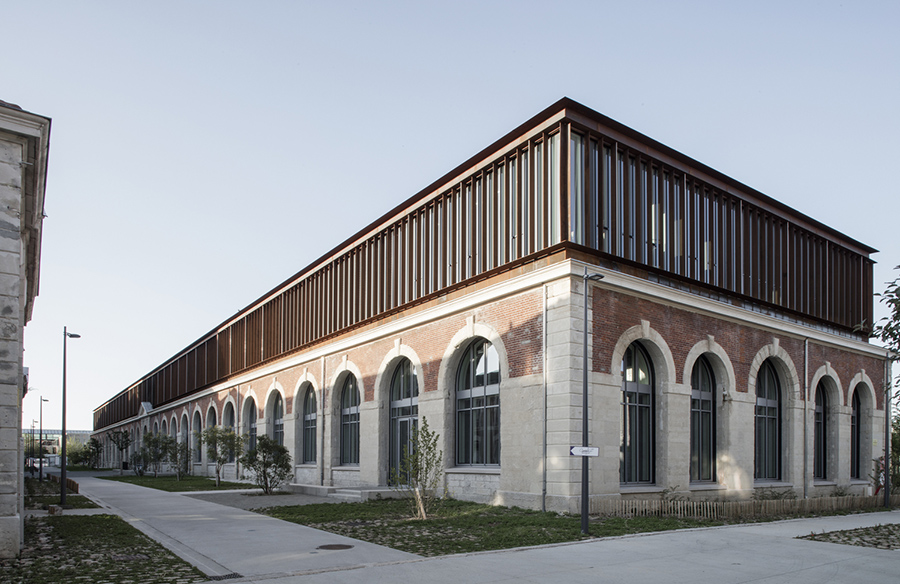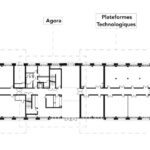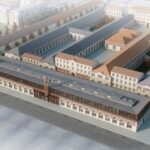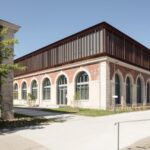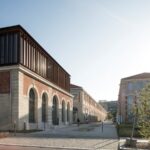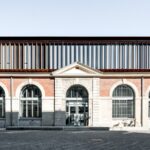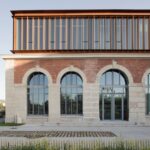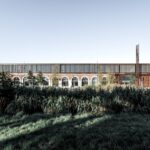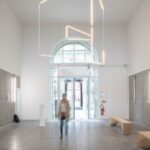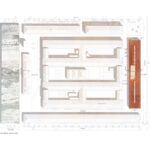Historical Context
The Knowledge Center for Innovation in Saint-Étienne, designed by K architectures, is situated within the former Saint-Etienne arms factory, an industrial estate established in 1864. Reflecting the rationalist architecture of the 18th century, the factory, constructed of white stone and red brick, symbolizes the era’s fascination with industrial progress.

Cultural Integration
The conversion of the factory into a creative district, which houses prestigious programs like the Cité du Design and university branches, is emblematic of the city’s history. The blending of industrial architectural heritage with contemporary culture and knowledge gives rise to a unique identity, or “genius loci.”
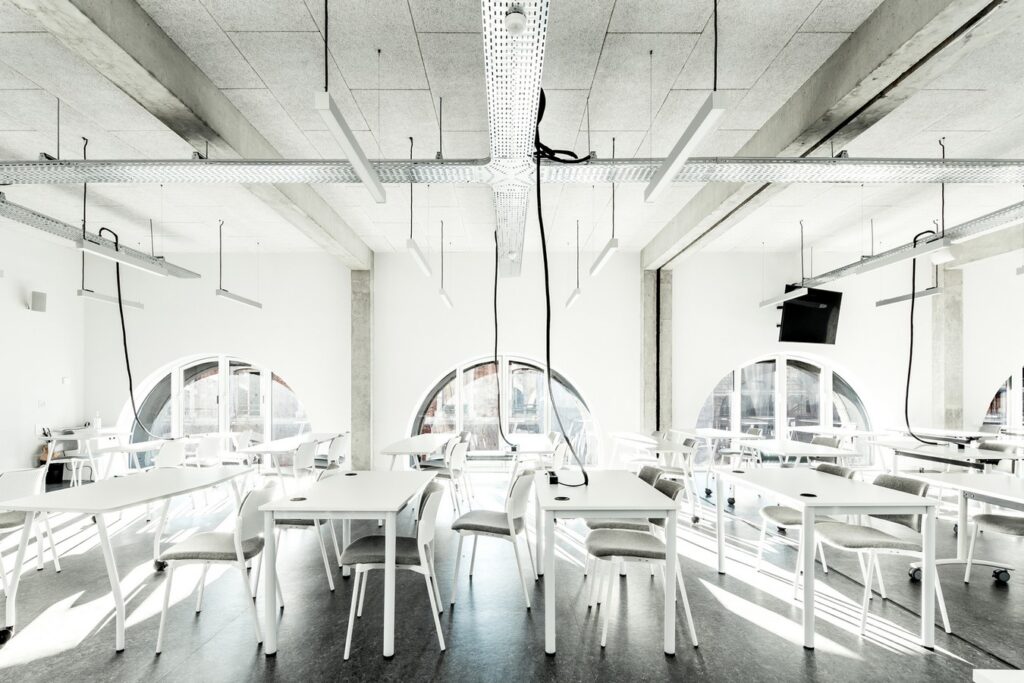
Transformation and Rebirth
“Les Forges,” a neoclassical workshop within the factory, underwent extensive transformation following its closure in 1989. Despite nearly 30 years of abandonment and partial destruction, it was designated as a historical monument in 2006. The workshop’s reconversion into the Knowledge Center for Innovation represents a delicate balance between preserving heritage and embracing modernity.

Architectural Design
The architectural design juxtaposes heritage preservation with contemporary aesthetics. The extension building, characterized by pre-weathered metal and glass abstraction, pays homage to the industrial functionalism of the 19th century. The facades, featuring a rhythmic repetition of vertical bands, create a dialogue between transparency and solidity, opacity and lightness.
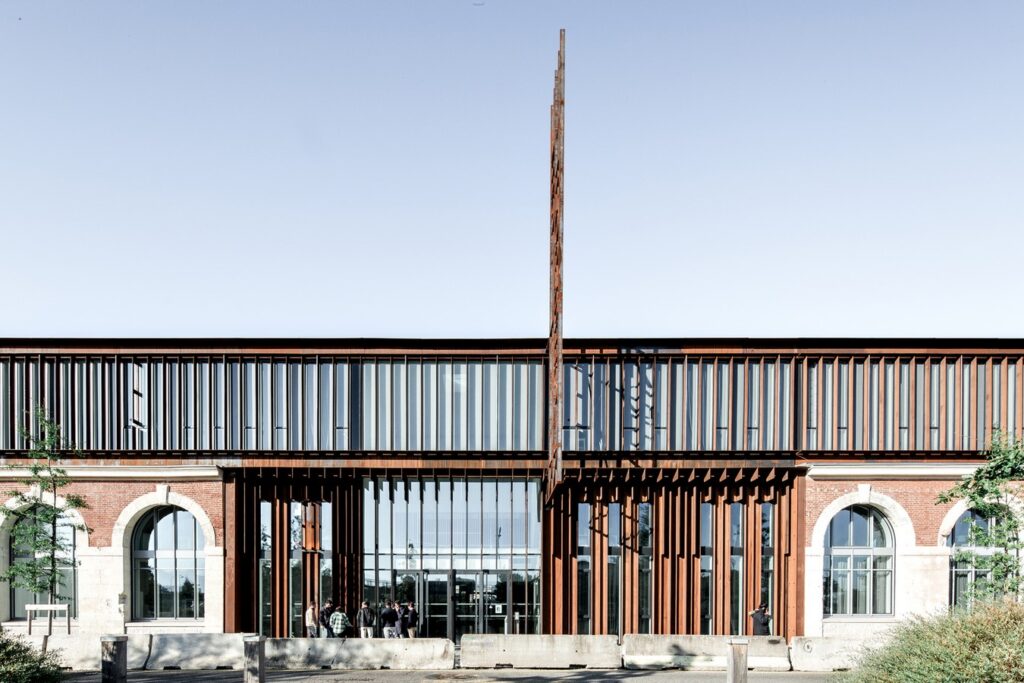
Interior Spaces
The interior spaces reflect a harmonious blend of tradition and modernity. The ground floor houses the Innovation Centre, equipped with high-tech research facilities, while the upper levels accommodate learning centers, business incubators, and teaching facilities. The architectural ambiance is characterized by a minimalist palette of whites, minerals, and raw concrete, creating a bright and serene atmosphere.
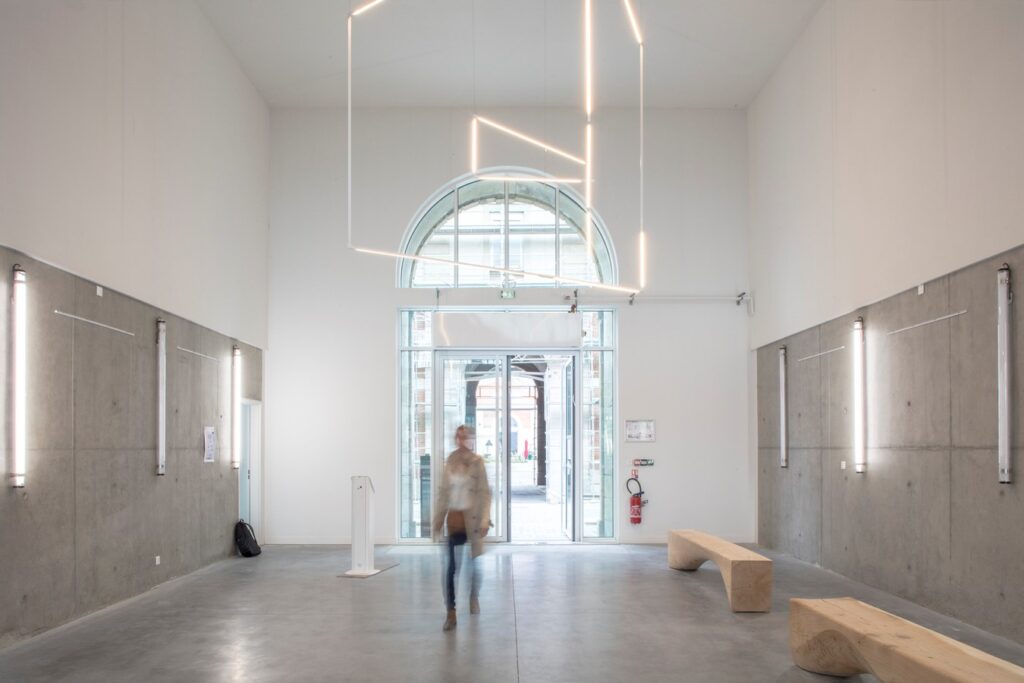
Integration and Restoration
Efforts were made to integrate structural elements from the original workshop into the new design scheme. Stone remnants were restored and incorporated into the building’s static structure, preserving the site’s historical significance. Additionally, a complex interplay of wood-frame walls and concrete porticos was specially designed to complement the existing stone architecture.

Conclusion
The Knowledge Center for Innovation in Saint-Étienne stands as a testament to the adaptive reuse of historical industrial sites. By seamlessly blending heritage preservation with contemporary architectural interventions, K architectures has revitalized a symbol of the city’s industrial past, creating a vibrant hub for innovation and learning in the heart of Saint-Étienne.


